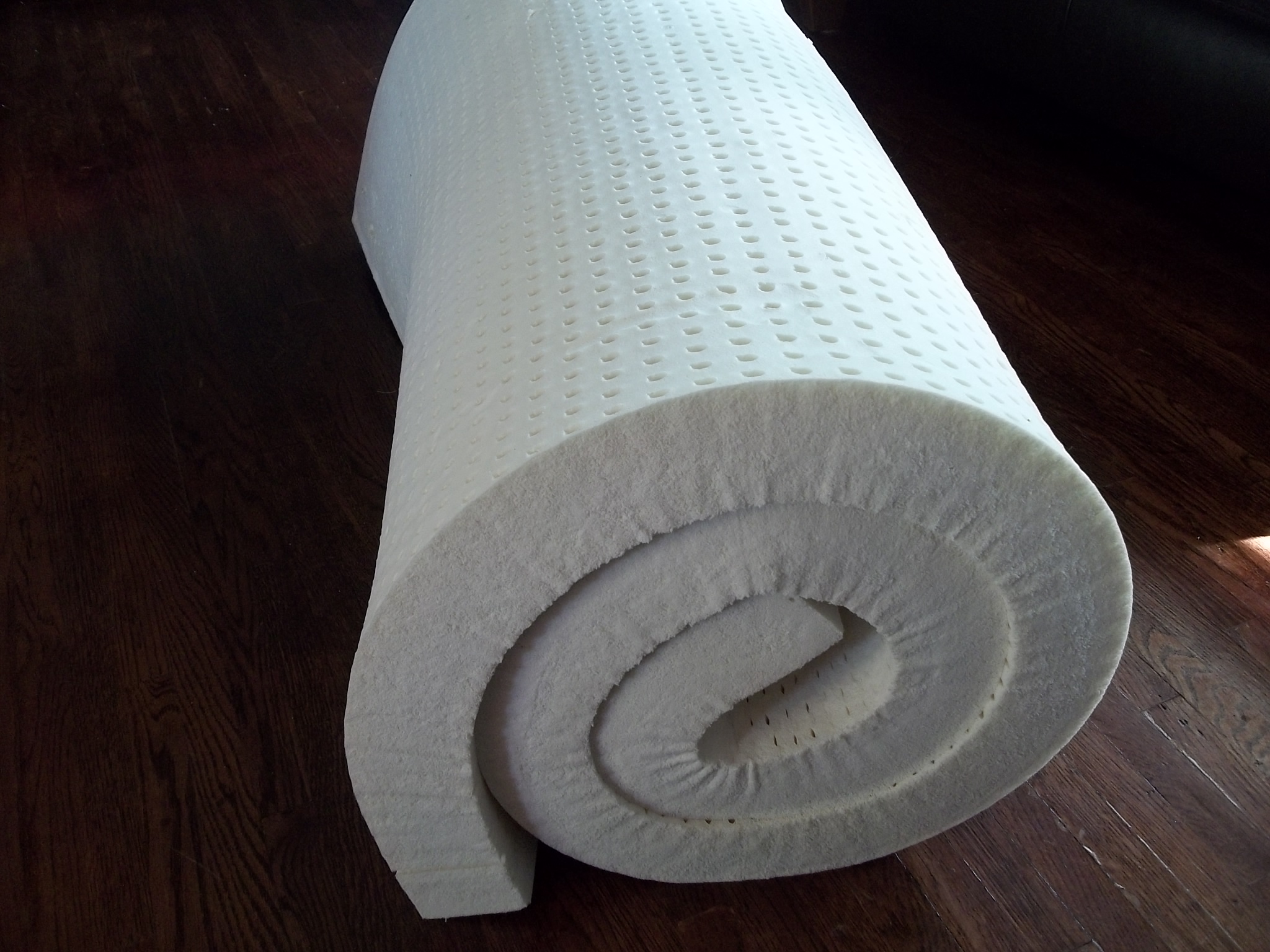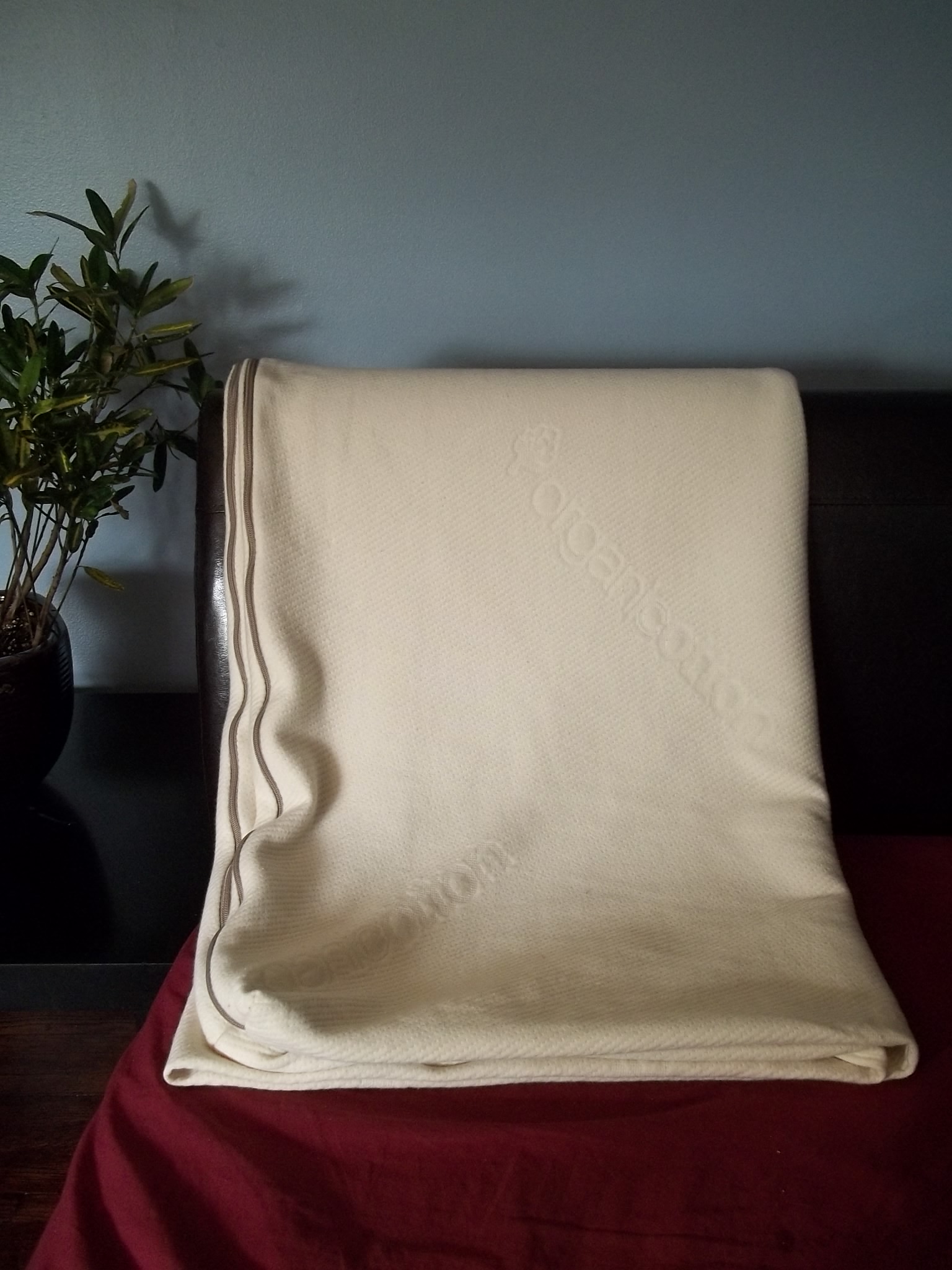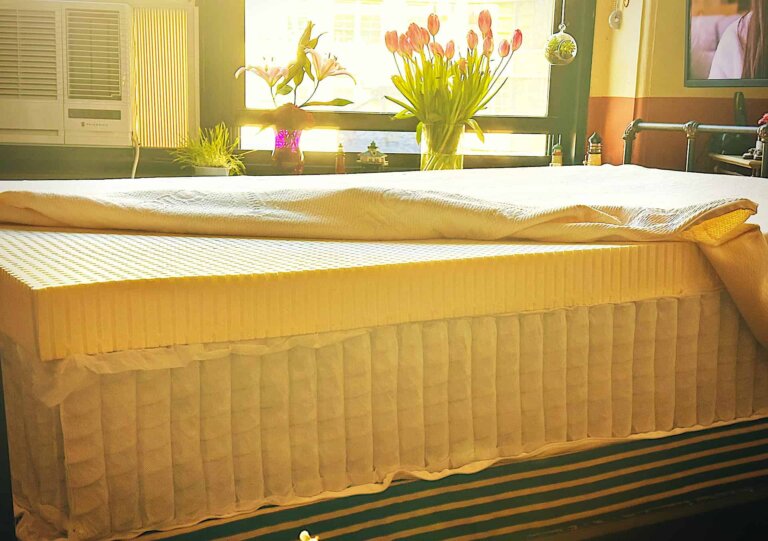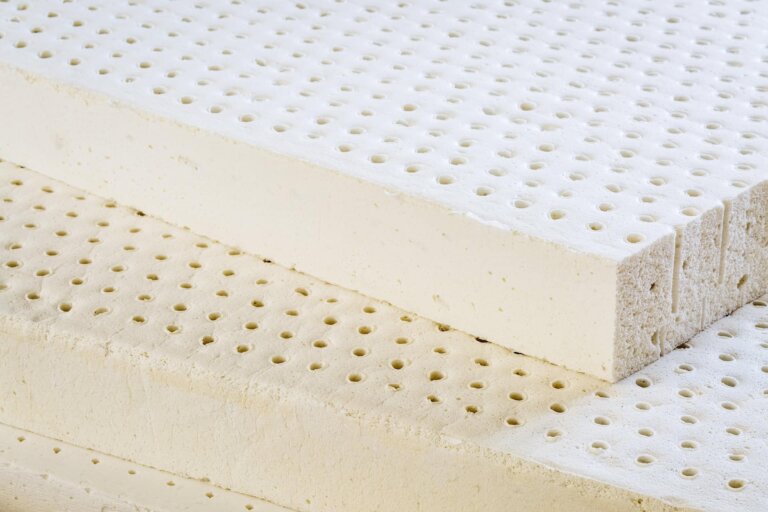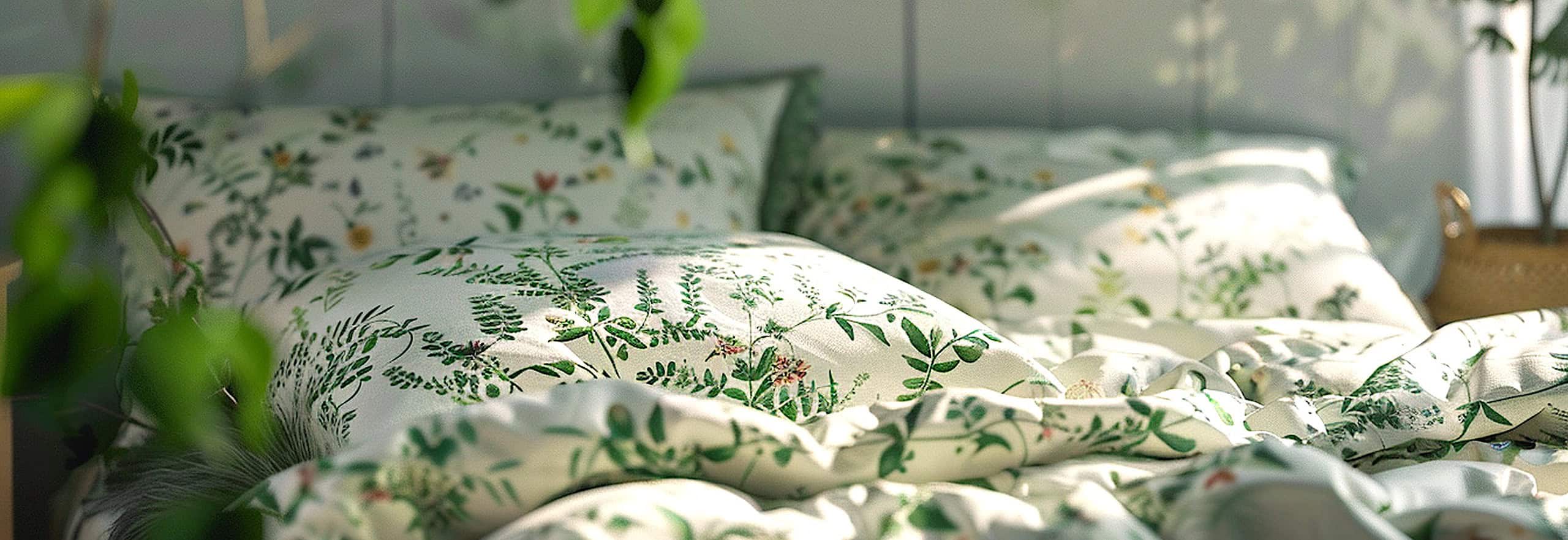
Sleep Green: Step-by-Step for a Vegan & Organic Mattress
Last modified on:
Vegan & Organic Mattress Materials
Organic Cotton
Organic cotton does not contain pesticides or harmful chemicals that could harm your health or the environment.
Natural Latex
Natural latex foam is a material derived from the sap of rubber trees. Natural latex foam can be used as a mattress’s support or comfort layer.
Hemp
Hemp is a plant-based fiber that is strong, breathable, and eco-friendly. Hemp can be used as a mattress cover or as a hemp coir bed rug.
Kapok
Kapok is a fluffy fiber made from the seed pods of kapok trees. Kapok can be used to fill a pillow or as the very top comfort layer of a mattress.
Pocketed Coils
Pocketed coils are individually wrapped springs that move independently. They reduce motion transfer and offer exceptional contouring and pressure relief.
A Truly vegan & Organic Mattress
Starting your journey toward creating a truly vegan & organic mattress requires a deeper understanding of the materials typically used to meet flammability standards, many of which may not align with vegan values.
By exploring the history and issues surrounding these materials, vegans can consider DIY alternatives that adhere to their ethical and health standards.
Using sustainable and vegan-friendly materials like organic cotton, steel, natural latex, hemp, and kapok, you can design a mattress that both supports your body for restful sleep and upholds your principles.
The Challenge of a Vegan and Organic Mattress
At its core, the difficulty for vegans in finding an organic mattress boils down to smokers—specifically, those smoking in bed. While cooking causes nearly half of home fires in the U.S., smoking, particularly in bed, leads to the most fatalities. This has led to stringent flammability regulations for mattresses.
To comply, many manufacturers use chemical flame retardants, which can be toxic. Organic retailers, avoiding these chemicals, often turn to wool or fiberglass sleeves. Wool, a natural flame retardant, is not an option for vegans. Fiberglass, although effective, has its own health risks.
Flame retardant laws date back to the 1970s when smoldering cigarettes were found to cause numerous fires and deaths. California’s TB 117 in 1972 required mattresses to withstand open flame exposure, a standard that became nationwide in 2007. This led to widespread use of chemical flame retardants.
These chemicals can be persistent, bioaccumulative, and toxic, raising health concerns. Vegans aiming to avoid them face challenges since manufacturers aren’t required to disclose flame retardants or fiberglass use, which can irritate skin and lungs.
It’s certainly frustrating, but unfortunately, finding a genuinely vegan & organic mattress remains a complex issue.
We have a longer blog post on this issue if you want to learn more.

100% Vegan & Organic DIY Mattress
Super clean. Super ethical. Super comfy.
Materials
(top to bottom)
Instructions
- Spread out your zippered cover on your slatted bed base. As always, make sure your slats are no more than 3″ apart.
- Unzip and fold back the top of your zippered cover.
- Lay down your 1″ organic coconut coir base layer. Align it as neatly and as squarely as possible with the bottom of your cover.
- Unbox and place your 8″ Combi-Zone pocket coil unit directly on top of the coir pad, squaring up the corners.
- Stack your 1″ medium organic latex layer next. This is your transition layer, giving a little extra resilience and bounce between your coils and the plushy-soft comfort foam we’ll put on next.
- Finally, crown your creation by plopping on the 3″ soft organic latex layer.
- Zip up your cover, taking care not to catch the latex in the zipper.
- Stand back. Admire your work. Maybe give it a loving pat. Now, ceremoniously throw yourself onto your new organic masterpiece. Roll around. Take a nap. Call it a quality control inspection, you’ve earned it.
Notes
This mattress is an organic powerhouse. 🌱✨
Every major component is GOLS certified, which means sleeping on your mattress is like floating on a cloud of ethical, chemical-free goodness.
Support & Comfort:
The Combi-Zone coil system offers more targeted support than non-zoned coils, featuring firmer coils under your hips and softer ones under your shoulders and legs.
Customizable Options:
That 1″ medium latex isn’t just filler. It’s a bridge that smooths out the feel between the supportive pocket coils and the plush comfort layer. If you’ve ever had a mattress that felt too squishy on top but too firm underneath, this transition layer helps prevent that.
A great feature of this build is the ability to swap around the comfort layer and the transition layer to see which way you prefer. Give yourself a few nights’ sleep (at least) on each configuration before deciding which you ultimately prefer.
Organic All Around:
Nearly everything in this build is certified organic, so you can rest easy knowing you’ve skipped the glues, chemical flame retardants, and mystery foams lurking in so many conventional mattresses. (And if you want to brag about it to friends, we fully support that.)
The video below ⬇️ demonstrates how to assemble a hybrid mattress very similar to the one we’ve blueprinted above. It’s not exactly the same, as our version has the 1″ coco coir base layer underneath the coils and uses two layers of latex foam as comfort layers (and our cover is different).
Fundamentally though, it’s similar enough that you get the idea.




